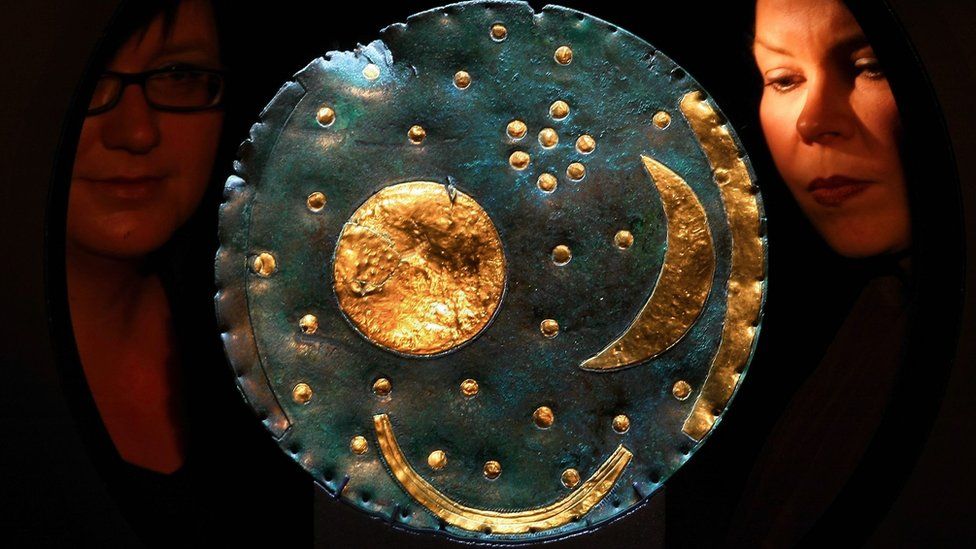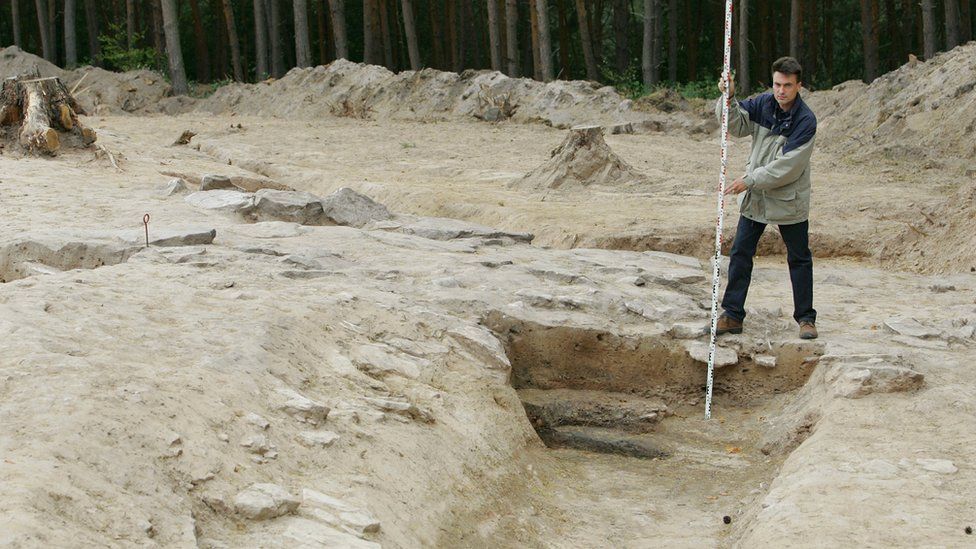
The $11 million Nebra Sky Disc, the oldest known map of stars will soon be on display at the British Museum, London. The disc is thought to be part of a pair. Is the other part waiting to be discovered?
What is the Nebra Sky Disc?
The Nebra Sky Disc, buried about 3,600 years ago along with two swords, spiral arm-rings, axes, and one bronze chisel close to Nebra, Germany. The ritualistic burial can also be a dedication to the gods. However, the date of origin of the disc is questionable. While some studies claim it to be from the Iron Age, another claim Bronze Age. However, the State Museum for Prehistory in Germany disputed claims of it originating in the Iron Age.
What is the purpose of the sky disc? Researchers are not sure. However, hypotheses imagine it to be an astronomical clock, a religious symbol of a work of art. Valued at $11 million, some believe that it is a part of a pair. Additionally, as per Archaeology magazine, the disc was in use for over 200 years before being buried. Additionally, the disc’s raw materials have components imported from as far as Cornwall. However, some of them were from the Mittelberg range, a village close to Nebra.
More on the peculiar disc

The disc is also the representation of the world’s oldest and “specific astronomical phenomenon”. According to the magazine’s notes, there are five phases in total. “In the first phase, the disc illustrated the night sky with 32 gold stars, including the Pleiades, a hold orb representing the sun or a full moon, and a crescent moon. This illustration served as a reminder of when it was necessary to synchronize the lunar and solar years by inserting a leap month.”
The disc, discovered in 1999 by treasure gunters in Nebra, Germany. However, the discovery was illegal as ‘treasure hunters’ found it using a metal detector and only recovered it from a black market raid in Switzerland. Moreover, the disc is one of the most important discoveries of the 20th century. Additionally, it has an association with the Unetice culture, made up of several communities across central Europe from the early Bronze Age.






